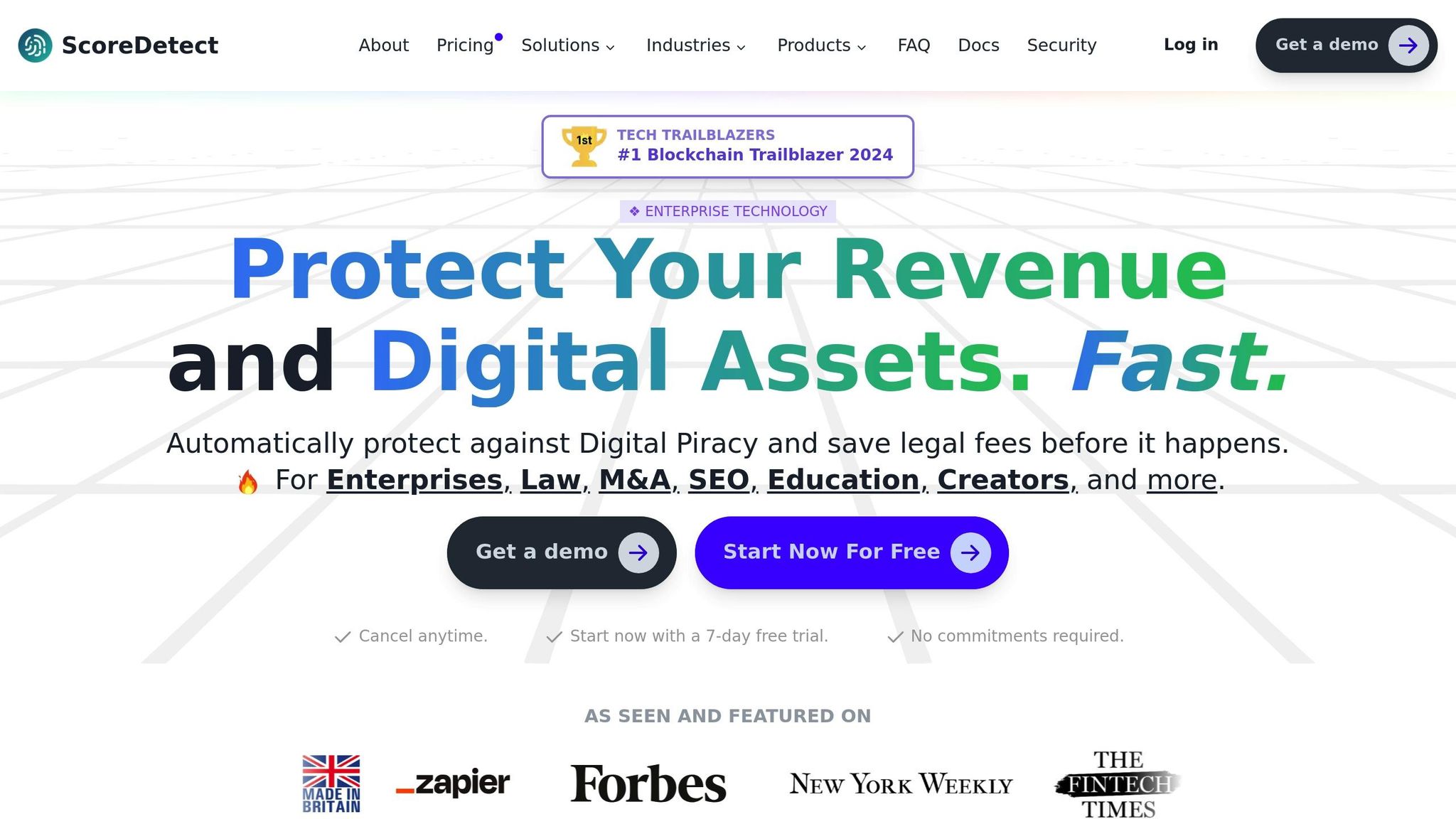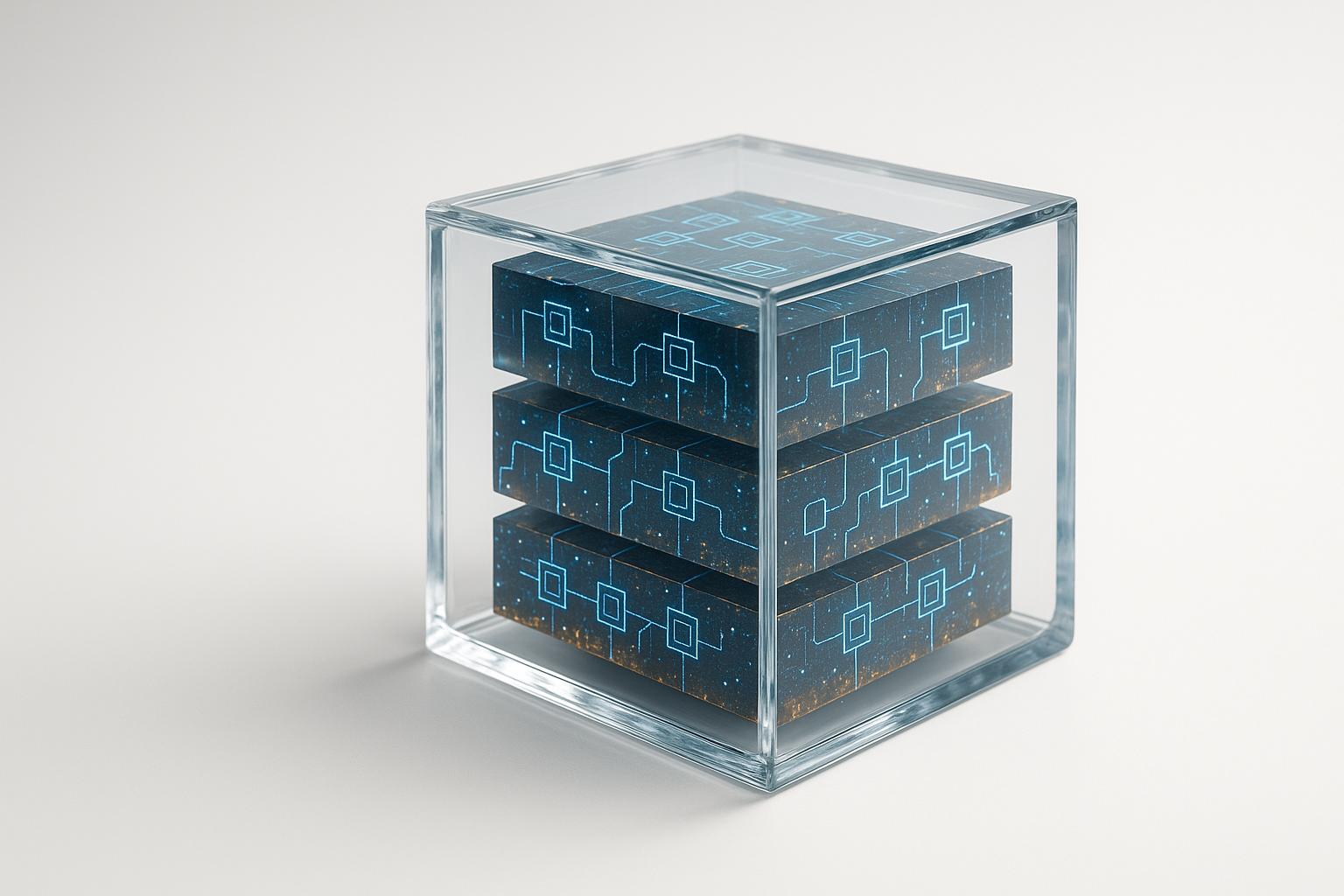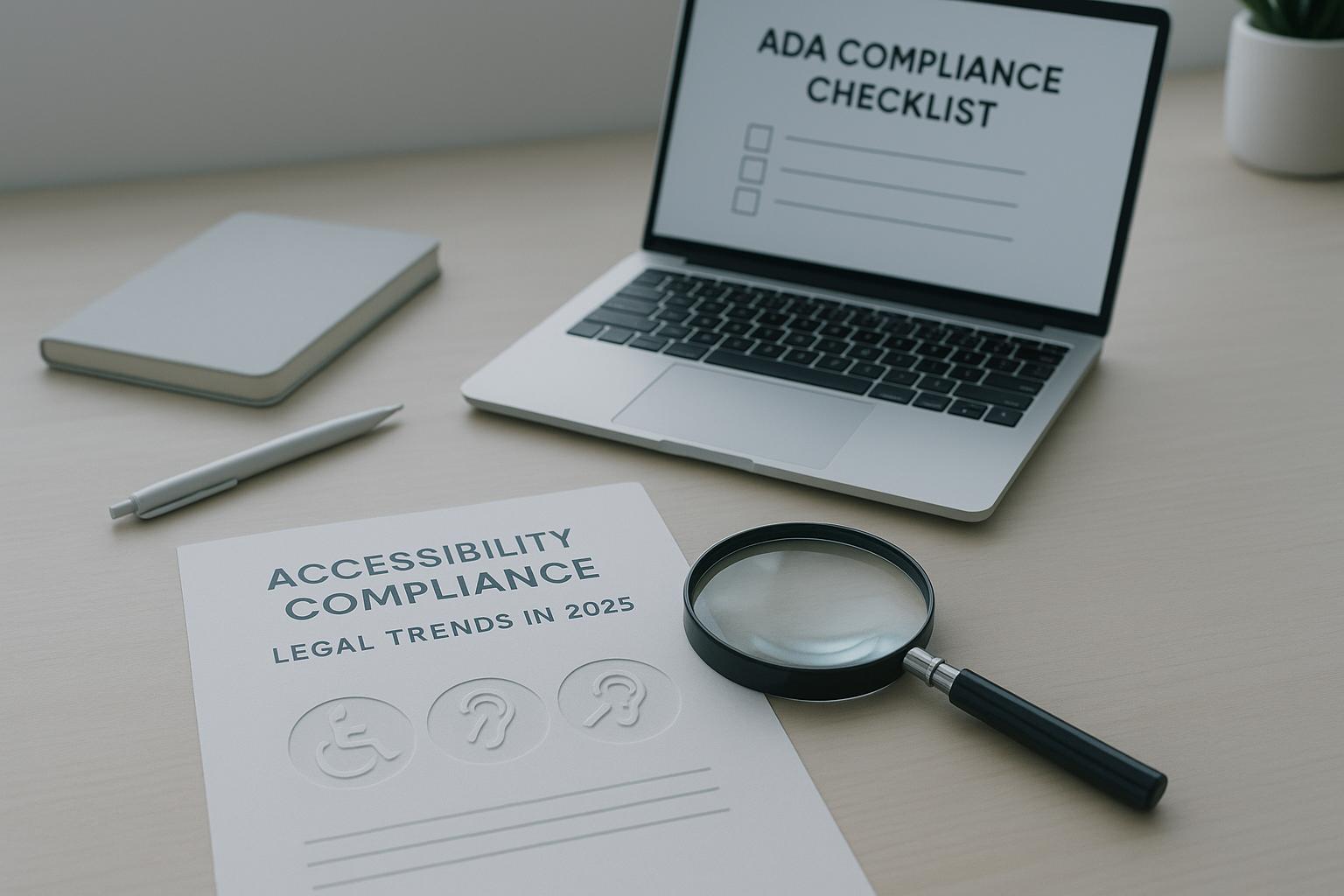AI watermarking is a way to put secret marks in AI-made stuff like pictures and videos. This lets us check where it came from. As AI that makes very real-looking things grows, worry over false news, copyright troubles, and bad use have gone up. Watermarking cuts these risks by letting makers, companies, and sites track and keep the realness of their stuff safe.
Key points:
- Generative AI is growing fast: By 2026, over 80% of big groups plan to use generative AI, up from less than 5% in 2023.
- Bigger risks: Fake stuff, tricks, breaking copyright, and false news are getting tough to spot, with AI stuff often looking just like what people make.
- How watermarking works: Secret digital marks go into stuff when it is made and can still be seen even after changes like making it smaller or squeezing it.
- Real-world examples: Tools like Google’s SynthID have already put marks on over 10 billion AI items, making sure they can be traced and held responsible.
AI watermarking is turning into a key tool in a digital world more and more shaped by generative AI. It not only keeps makers safe but also keeps trust in how real content is.
Issues with Making AI Content
Growth of Making AI
Making AI has shifted how we make content, letting almost anyone use the right tools. Jobs that once needed expert skill and high-cost gear can now be done with AI, making a big wave of fake media that looks real. This rise in easy use has also brought on new issues, like knowing what is real and what is made by AI.
The quality of AI-made content is getting better very fast. It’s now hard to tell apart what is made by people and what is made by AI tools [2]. This change is not small – it’s changing how we look at and trust what we see and hear online.
The movie world shows clear cases of this mix-up. In the film Roadrunner, AI was used to make the voice of the gone Anthony Bourdain, making many viewers not know they were hearing made-up sound [5]. Also, in Indiana Jones and the Dial of Destiny, Harrison Ford was made to look younger with AI, making it feel real that we are seeing the actor from years ago [5]. These cases show how good AI is at making content that seems true.
"As generative AI tools such as OpenAI ChatGPT and Google Gemini rapidly improve, the quality of the texts generated by these tools also rapidly improves, making it more and more difficult for humans to detect AI-generated text and the integrity of the information in it." – Dongwon Lee, professor in the College of Information Sciences and Technology at Penn State [2]
With the growth of fake media, new ways to make things arise, but so do big risks that need focus in many areas.
Big Risks in Content
The problems from AI that makes its own content are not just about making stuff – they reach into dangers that can deeply impact people, companies, and all of us. Research points out that people are not good at telling apart content made by AI, with folks finding AI-made text right only 53% of the time and spotting AI-made pictures correct just 61% of the time [2][3].
"People are not as adept at making the distinction as they think they are." – Andreea Pocol, PhD candidate in Computer Science at the University of Waterloo [3]
These risk areas grow bigger from these tests:
- Money scams and web crimes: AI-led tricks are more now. In 2022, people in the US lost more than $10.3 billion from scams using AI tools [4]. From fake videos to smart email traps, these tricks are tough to spot and stop.
- Dangers to personal safety: AI can copy voices and acts, leading to scary events. For example, Jennifer DeStefano was hit by a fake kidnap scam where AI copied her daughter’s voice to ask for cash [5]. Such acts show how AI can use weak spots to do very real scams.
- Rights and idea theft issues: People who make stuff are fighting AI that can make things that look like theirs. Saying who owns what or if it’s used without an okay is now a hard legal fight. This leaves makers open to their ideas being stolen.
- Wrong info and lies: AI can make and spread lies, change how people think, and break the rules of fair vote tests. Fake news and changed media can be made more now, making it hard to keep talks real and trusted.
"Disinformation isn’t new, but the tools of disinformation have been constantly shifting and evolving… It may get to a point where people, no matter how trained they will be, will still struggle to differentiate real images from fakes. That’s why we need to develop tools to identify and counter this. It’s like a new AI arms race." – Andreea Pocol, PhD candidate in Computer Science at the University of Waterloo [3]
AI grows fast, faster than experts and rule-makers can keep up. This makes it tough for them to deal with the wrong use of AI-made stuff. This leaves us all to face its big and growing risks.
Tree-Ring Watermarks: Fingerprints for Diffusion Images that are Invisible and Robust (Explained)
How AI Watermarking Helps
AI watermarking helps spot fake images and videos by putting special digital marks in them. These marks stay the same, even if the image or video changes or moves on the web. There are two big steps here: first, the mark is put in when the image or video is made. Later, special tools find these hidden marks in the files. This makes sure AI-made images and videos can be followed and checked over time. Now, let’s look at the kinds of watermarks and how they get put in and found.
"AI watermarking is the process of embedding a recognizable, unique signal into the output of an artificial intelligence model, such as text or an image, to identify that content as AI generated." – Lev Craig, Site Editor [6]
Google DeepMind has a real case of using this tech. They made a tool for watermarking that changes small spots in images made by AI. It forms a secret design that a different AI can spot – even if the picture gets changed [7]. Up to now, this tech has marked more than 10 billion things using Google’s SynthID system [8].
Types of Watermarks
AI watermarking picks marks based on the need to keep the content safe.
Visible watermarks are easy to see – like logos, words, or shapes that show who owns the content. On the other hand, invisible watermarks hide in the content and need special tools to find. These are tough to get rid of yet keep the user’s view in mind. For example, Amazon uses these in Alexa ads, putting the marks right in the sound so tracking is quiet [7].
Watermarks vary in toughness:
- Robust watermarks stay through changes like compressing, cutting, or filtering. They keep the copyright safe for a long time.
- Fragile watermarks break easier and can show if someone messed with the content without permission.
How It’s Done and Found
Adding marks works through codes that mix data patterns into the content. These changes are light, like shifting spot details in pictures or changing bits in video or sound. A teamed effort by Google and NVIDIA shows this in action – videos made with NVIDIA’s Cosmos™ get marked when made, locking the marks in tight [8].
Finding marks works like a detective. Codes hunt for these mixed patterns, even if the content got squeezed, resized, cut, or more. This keeps the content safe and checkable all its life.
"Watermarking is to AI-generated content what digital signatures are to secure communication. It provides authentication, accountability, and control." – Staff Writer, MarTech360 [1]
sbb-itb-738ac1e
Using AI to Add Marks to Your Work
As more AI that can make stuff finds its way around, it’s key to keep your work safe. A good way to do this is with AI marks. Setting it up takes some work, but the result is a strong safe wall around your work. The main point is to use tools that fit well into your regular work set up without slowing you down.
Picking a Marking Tool
The right marking tool depends on what you make and how tight you want security. Many makers like marks that don’t show because they keep your work neat but still let you track it online. When picking a tool, find one that works with many file types – like photos, videos, and sound – so you can keep all you make safe in one spot.
Some tools, like ScoreDetect, do more by looking around the web for your marked work. Their web search tech finds your stuff 95% of the time, even through blocks. Also, tools like ScoreDetect can send notes to take down stuff no one should have with a 96% win rate.
Marking is for all fields. If you work in schooling, media, online selling, or make content, it can help you spot AI-made pictures, stop fake clips, and check product photos to fight fakes [1]. Once you pick a tool, put it into your work flow.
Making Marking Fit into Your Work
To make marking smooth, choose tools that blend into your current ways. Many options let you add marks right when you make content with API ties or bits for sites like WordPress. For example, ScoreDetect’s WordPress bit grabs each piece you post or change, putting proof of owning it in the blockchain. This keeps your work safe and boosts your site’s pull, which can push up SEO.
If you like automating, tools like Zapier can link ScoreDetect to over 6,000 web apps. This lets you set up ways to mark stuff as you put it up on places like Dropbox and keep track of it online.
Putting marks in as you make stuff is key. This way makes sure the marks stay despite changes or squishing. In fact, many AI tools now include marking to push using stuff right and make tracking easy [1].
With marks set, it’s time to watch and handle any wrong use.
Keeping Track and Managing Wrong Use
After you share your work, it’s key to watch for any use without your OK. Blockchain tech can help by making sure records that no one can change prove you own it [9]. These records can be strong proof if you need to take it to court.
Top web scraping tools can spot your marked content even when changed, making sure you can still prove you own it. Auto systems make it easy by making and sending takedown requests to web hosts, social media, or search places when wrong use is seen. For big issues, clear records – like times, pictures, and blockchain logs – can make a strong proof chain.
AI marking is more than stopping theft. It’s a way to keep trust with your people, show your work is real, and prove your digital stuff is safe. In a world with more and more fake media, marking lets you keep control of what you make.
ScoreDetect for AI Watermark Back-Up

ScoreDetect boosts the safety of AI-made stuff by mixing top tech with smart fix plans. Its many-layer back-up system is made to keep AI images and videos safe easy, working smooth in the back to meet hard needs.
See-Through Watermark Tech
ScoreDetect uses watermarking that you can’t see to keep stuff safe in a way that gets around the downs of old ways. Instead of putting on marks you can see that might be cut or taken off, it hides watermarks right in the digital stuff. This is done by making small changes to pixel looks or colors in ways that stay unseen by eyes but can be found by clever works.
The good thing about this way is that it keeps the look and use of stuff just the same. Whether you make AI stuff for ads, learning, or fun, the watermarks won’t mess with the look or smart feel of your work. Even after usual edits or making it smaller, the watermarks stay, making it hard to take them off without the right to.
This side is great for places like media and fun, where keeping a top look is key. For example, an ad group can feel safe back-up its AI-made ad images without fear of watermarks hurting the look or steady feel of the brand. Beyond watermarking, ScoreDetect puts in more safety with active checks.
Checks and Take-Down Work
ScoreDetect has a strong check-up system powered by web pulling tech, which wins against stop-pulling tricks 95% of the time. This lets the system keep scanning the web for your safe stuff that’s used wrong, even if it has been changed, moved, or hidden.
Working on its own in the back, the system goes through thousands of sites, social media, and stuff spots for wrong use. When it spots possible misuse, it doesn’t just tell you – it acts. With a 96% win rate, ScoreDetect sends out notices to fix use rights fast.
This auto work stops the slow task of looking for wrong use on your own and making take-down papers. Content makers can keep on making while the system fixes issues. By making legal notices and sending them to web hosts, social media, and search tools, ScoreDetect makes sure replies to wrongs are quick and smart.
Block Chain Rights Back-Up
To make content owning stronger, ScoreDetect brings in block chain tech. It logs a check mark for each item on the block chain, making a safe, time-marked record of owning. This way avoids the need to keep the real digital stuff on the block chain, keeping costs low while giving strong proof for legal fights.
This block chain record acts as sure proof of owning at a set time, which can be key in rights fights or legal talks. When used with see-through watermarking, this two-layer back-up system works as both a tech and legal hold: the watermark helps with finding and tracking, while the block chain record gives legal proof.
In real use, this tool has been very helpful. For instance, when illegal copies of safe stuff pop up on other sites or areas, the blockchain-recorded check sum gives the proof needed for quick legal steps. Watermarking and blockchain together make a full safe setup.
ScoreDetect’s blockchain link also fits well with its WordPress add-on. This add-on notes every new or changed post, making a clear record of who owns it. This boosts SEO by showing the content is real. This easy method lets normal writers keep their work safe with no fuss.
Final Words
In today’s fast digital world, we need strong, AI-led ways to mark content. As fake media gets better, it’s more important than ever to have good ways to keep content safe.
Marking acts like a digital mark for AI-made images and videos, giving both proof and responsibility. By letting creators spot AI-made content, marking helps fight false info and keep creative rights safe.
ScoreDetect’s way stands out by keeping content safe without losing its quality. Its unseen marking tech, together with auto takedowns, offers creators help right away against misuse. Also, its blockchain proof adds a legal layer, making sure ownership can be checked. This full plan not only keeps digital goods safe but also builds trust in the market.
For fields like media, marketing, learning, and fun, AI marking does more than protect – it helps keep trust with the audience and keeps the brand’s value right. By keeping content true, marking lets AI growth go on without dropping moral rules.
FAQs
How is AI watermarking unique from old ways, and why do we need it for AI-made work?
AI watermarking stands out from old ways by putting in hidden, strong marks right into AI-made pictures and films when they are made. Old watermarking often uses clear marks like logos or text on top, but AI watermarking stays out of sight while still letting the stuff be tracked and checked.
This way is key today, as more AI-made media pops up often. By making it hard to change or wrongly use stuff without getting seen, AI watermarking acts as a firm tool to keep what is made by the mind safe and make sure it is real.

